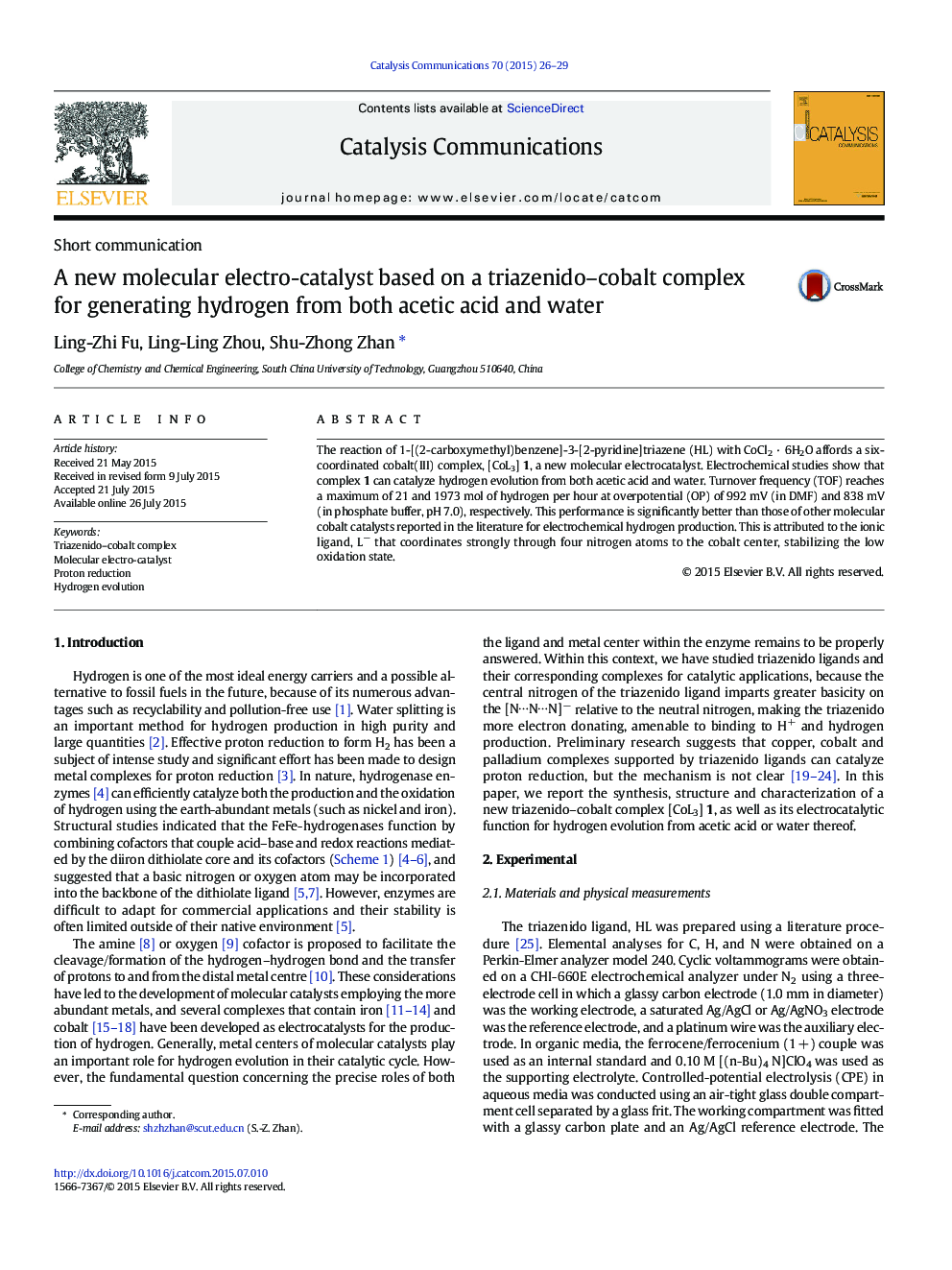| Article ID | Journal | Published Year | Pages | File Type |
|---|---|---|---|---|
| 50053 | Catalysis Communications | 2015 | 4 Pages |
•Reaction of a triazenido ligand (HL) and CoCl2 · 6H2O affords a cobalt complex, [CoL3] 1.•1 catalyzes hydrogen evolution from CH3COOH with TOF of 21 mol/h at OP of 992 mV.•1 catalyzes hydrogen evolution from water with TOF of 1973 mol/h at OP of 838 mV.
The reaction of 1-[(2-carboxymethyl)benzene]-3-[2-pyridine]triazene (HL) with CoCl2 · 6H2O affords a six-coordinated cobalt(III) complex, [CoL3] 1, a new molecular electrocatalyst. Electrochemical studies show that complex 1 can catalyze hydrogen evolution from both acetic acid and water. Turnover frequency (TOF) reaches a maximum of 21 and 1973 mol of hydrogen per hour at overpotential (OP) of 992 mV (in DMF) and 838 mV (in phosphate buffer, pH 7.0), respectively. This performance is significantly better than those of other molecular cobalt catalysts reported in the literature for electrochemical hydrogen production. This is attributed to the ionic ligand, L− that coordinates strongly through four nitrogen atoms to the cobalt center, stabilizing the low oxidation state.
Graphical abstractFigure optionsDownload full-size imageDownload as PowerPoint slide
